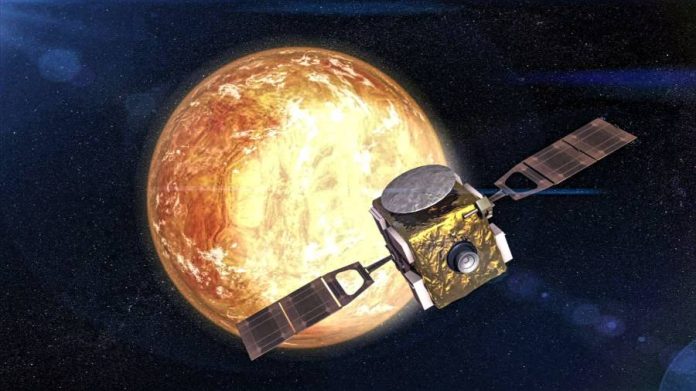
Astronomers spotted a strange wave over the surface of Venus yesterday with the help of Japan’s Akatsuki spacecraft. The scientific community has its eyes on the event because this kind of phenomena is not common in nearby celestial bodies.
Japan’s Akatsuki satellite has been in the yellow planet’s orbit for more than a year now.
The pictures retrieved from its memory show the region covered by the strange ‘smile’ is about 10,000 kilometers in length.
Researchers led by Makoto Taguchi at the College of Science at Tokyo’s Rikkyo University conducted a study on the wave and published it in the journal Nature Geoscience. Their findings are completely available online.
Why is the Venus “smile” so rare?
The atmosphere of Venus is a thick layer of sulfuric clouds that move westward at a speed of 100 meters per second, which makes this occurrence a very strange event. On Venus, things do not tend to stand still for a long time.
Initial studies propose the formation might be the result of a cloud cluster in the lower atmosphere ‘crashing’ with a large mountain from the planet’s surface. These atmospheric movements sometimes happen on Earth, and scientists call them ‘gravity waves.’

The behavior observed in this part of Venus’ atmosphere suggests that our current understanding of the planet’s inner workings might need some rethinking. Our yellow neighbor’s atmospheric dynamics are more complex than astronomers initially thought.
Similar events have happened in the past, though never with this magnitude. The Mariner 10 spacecraft observed a strange Y-shaped formation on Venus in 1973 via ultraviolet light, though it did not relate to the planet’s atmosphere.
Fun facts and a little backstory on Venus
The yellow-clad planet is very similar to Earth in mass and size but infinitely more dangerous. Sulfuric acid is highly corrosive and can even eat through metal, so traveling there has never been in the interest of space agencies.
Named after the Roman goddess of beauty, it is the planet that’s closest to Earth in the Solar System, a lot closer than Mars. Anyone in the world can see it in the sky with the naked eye every night as the second brightest natural object in our firmament.
Some scientists believe that Venus might have held an environment similar to that of Earth with large amounts of water. However, high temperatures from an extreme greenhouse effect might have produced the hostile atmosphere researchers know today.
This theory poses interesting, and frightening questions about the Earth’s future. Some believe that climate change could lead to a similar result, albeit in hundreds of thousands of years.
Source: Nature Asia











